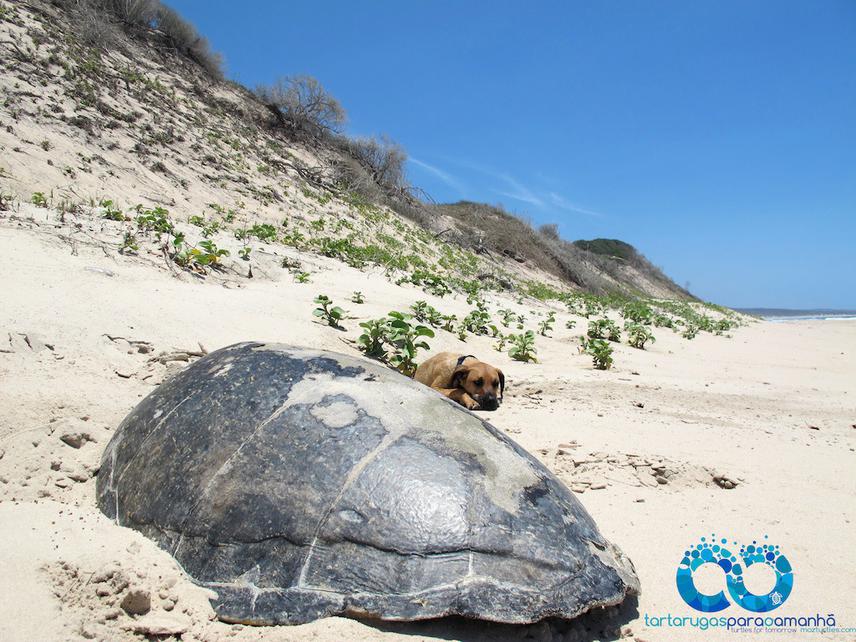Jessica Lauren Williams
Other projects
To address knowledge gaps in our understanding of poaching (both physical hotspot locations and motives for poaching. Additionally this project aims to expand community awareness of turtle poaching and work with the fishers to identify existing or develop new alternative livelihood options.

Mature green turtle carapace found at Travessia Beach.
Despite being legally protected since 1965, poaching is an increasing threat to regional Mozambican sea turtle populations. The project area has been confirmed habitat for four of the five Mozambican sea turtle species Loggerhead (Caretta caretta), Green (Chelonia mydas), Hawksbill (Eretmochelys imbircata) and Leatherback (Dermochelys coriacea). The nesting species are primarily Loggerhead and Leatherback although some Green nesting occurs at project sites in Northern Inhambane Province. Poaching of all species occurs throughout the year however during the nesting season (Oct-Mar) nesting species are likely to be at greater risk.
Our initial RSG work explored the link between recent declines in nesting turtles with a rise in poaching. Through beach surveys and interviews we began to understand motives and develop alternative livelihood concepts. However, as our project progressed, we became aware that motives and livelihood solutions are highly varied between fishing communities. This high variation has influenced the suitability of using one widespread approach for the province. To advance this, we will make site visits to identified and suspected poaching hotspots to quantify the impacts across a wider geographical region and to identify and trial livelihood alternatives.
Through our first RSG project we collected baseline information on poaching activities in the Tofo Beach area to fill current knowledge gaps. We also conducted interviews with local Tofo fishermen to document the motives and drivers for hunting. The next stage will be to expand this work to cover a larger geographic area and interviews will reach broader spectrum of the fishing community. To address knowledge gaps and work with the fishers to develop alternative livelihood options. This proposal focuses on turtle conservation along the southern Mozambican coast, in particular poaching hotspots identified from our preliminary interviews and trial of aerial surveys. These areas include Guinjata Bay, Mahangati, San Sebastian and BD point, Inhassorro. We will explore a few remote and highly active fishing communities where poaching is suspected to be prominent. This additional information will enable us to present comprehensive geospatial data on the frequency and distribution of poaching within the Province.
This project is providing the first information from the country on the extent of sea turtle poaching and its impact on nesting and in-water sea turtle populations. By working directly with former and current poachers we will better-understand why poaching has increased and how to develop practical alternatives and/or enforcement strategies.